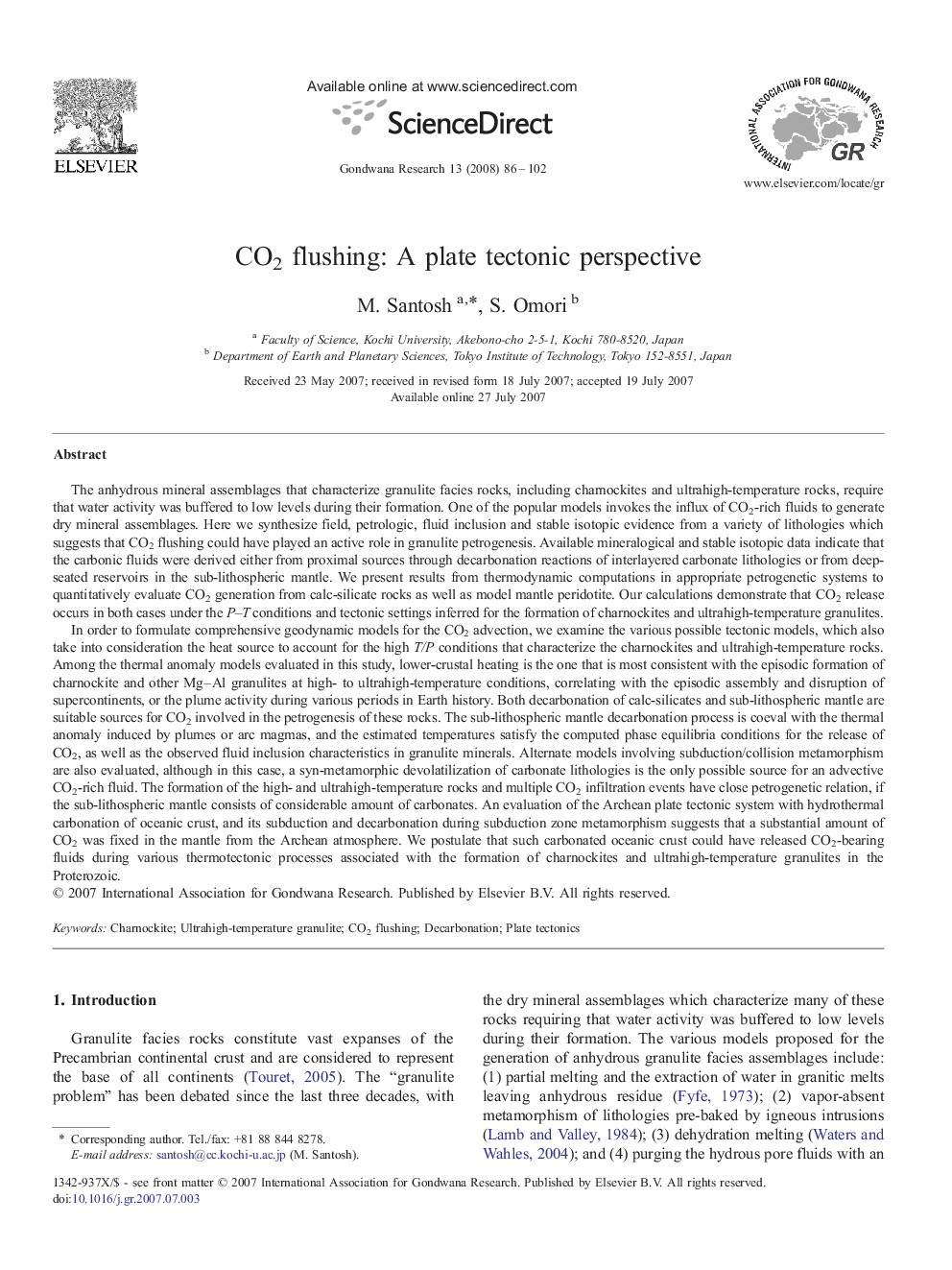| کد مقاله | کد نشریه | سال انتشار | مقاله انگلیسی | نسخه تمام متن |
|---|---|---|---|---|
| 4727630 | 1356386 | 2008 | 17 صفحه PDF | دانلود رایگان |

The anhydrous mineral assemblages that characterize granulite facies rocks, including charnockites and ultrahigh-temperature rocks, require that water activity was buffered to low levels during their formation. One of the popular models invokes the influx of CO2-rich fluids to generate dry mineral assemblages. Here we synthesize field, petrologic, fluid inclusion and stable isotopic evidence from a variety of lithologies which suggests that CO2 flushing could have played an active role in granulite petrogenesis. Available mineralogical and stable isotopic data indicate that the carbonic fluids were derived either from proximal sources through decarbonation reactions of interlayered carbonate lithologies or from deep-seated reservoirs in the sub-lithospheric mantle. We present results from thermodynamic computations in appropriate petrogenetic systems to quantitatively evaluate CO2 generation from calc-silicate rocks as well as model mantle peridotite. Our calculations demonstrate that CO2 release occurs in both cases under the P–T conditions and tectonic settings inferred for the formation of charnockites and ultrahigh-temperature granulites.In order to formulate comprehensive geodynamic models for the CO2 advection, we examine the various possible tectonic models, which also take into consideration the heat source to account for the high T/P conditions that characterize the charnockites and ultrahigh-temperature rocks. Among the thermal anomaly models evaluated in this study, lower-crustal heating is the one that is most consistent with the episodic formation of charnockite and other Mg–Al granulites at high- to ultrahigh-temperature conditions, correlating with the episodic assembly and disruption of supercontinents, or the plume activity during various periods in Earth history. Both decarbonation of calc-silicates and sub-lithospheric mantle are suitable sources for CO2 involved in the petrogenesis of these rocks. The sub-lithospheric mantle decarbonation process is coeval with the thermal anomaly induced by plumes or arc magmas, and the estimated temperatures satisfy the computed phase equilibria conditions for the release of CO2, as well as the observed fluid inclusion characteristics in granulite minerals. Alternate models involving subduction/collision metamorphism are also evaluated, although in this case, a syn-metamorphic devolatilization of carbonate lithologies is the only possible source for an advective CO2-rich fluid. The formation of the high- and ultrahigh-temperature rocks and multiple CO2 infiltration events have close petrogenetic relation, if the sub-lithospheric mantle consists of considerable amount of carbonates. An evaluation of the Archean plate tectonic system with hydrothermal carbonation of oceanic crust, and its subduction and decarbonation during subduction zone metamorphism suggests that a substantial amount of CO2 was fixed in the mantle from the Archean atmosphere. We postulate that such carbonated oceanic crust could have released CO2-bearing fluids during various thermotectonic processes associated with the formation of charnockites and ultrahigh-temperature granulites in the Proterozoic.
Journal: Gondwana Research - Volume 13, Issue 1, January 2008, Pages 86–102